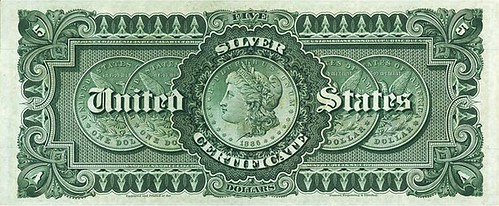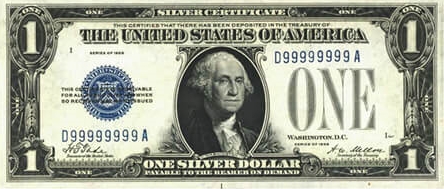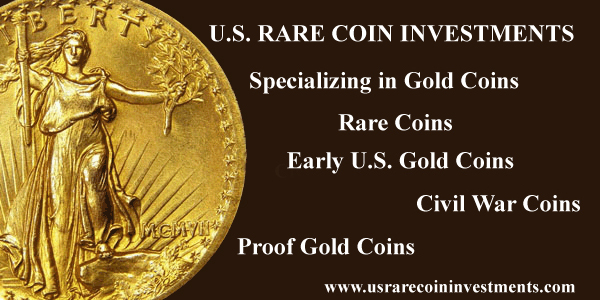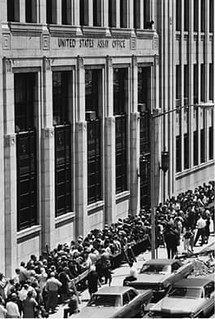
PREV ARTICLE
NEXT ARTICLE
FULL ISSUE
PREV FULL ISSUE
CERTIFICATES EXCHANGED FOR SILVER IN 1960S
Bob Korver's October 24, 2016 Coin World article captures the excitement of a brief period in the 1960s when people lined up for hours to exchange silver certificates for coins. Here's an excerpt. The first image shows crowds in line at the New York Assay Office on June 23, 1968.
-Editor
Intermediate paper money collectors have learned that certain classes of 19th century American notes have different legal redemption clauses. Advanced collectors who also happen to be lawyers may fully understand all of the fine print regarding tariffs and duties. Normal collectors — normal people — do not! And for that matter, don’t care — and never have. But for less than half a decade, coin and paper money collectors alike were focused on the “fine print” of silver certificates, especially when profits could be made without guilt or great difficulty. It was, perhaps, the most interesting four years since the U.S. government began issuing silver-backed notes in 1878. The silver certificates of the nineteenth century were made fully redeemable in silver dollars — and with this complete convertibility, the paper money was a perfectly acceptable substitute.

This 1886 Five Dollar Silver Certificate makes the fine print come to life When the size of American paper currency was reduced (from “large size” to “small size”) in 1929, the federal government technically made silver certificates even more desirable, by making them payable in any silver coins — and again, no one needed to care. Redemption of paper for silver was a moot point, as long as one dollar’s face worth of silver coins contained less than a dollar’s worth of silver metal. For that matter, the silver certificates circulated alongside Federal Reserve notes and United States notes in the 20th century, and no one cared except collectors interested in even more attractive notes. For most of the public, coins were heavy and annoying. In 1960, when I began collecting coins, I liked silver dollars, but it was because they were historic and heavy! The price of silver was about 90 cents an ounce (and the coins were made of 90 percent silver and weighed less than an ounce), so convertibility was more a theory than a practice. Then in 1961, everything began to change — for collectors and for the wider public. In 1961, the price of silver closed above $1 an ounce. The intrinsic value of a silver dollar was still less than $1 (as they do not contain an ounce of pure silver), but the Treasury grew concerned. Industrial and jewelry uses of silver were growing faster than mining, and the consequent production deficit forced prices higher.

Thankfully this funky serial number note was saved for collectors In November, President John F. Kennedy issued an executive order suspending further sales of government silver, and starting the retirement of $5 and $10 silver certificates. Silver continued its record appreciation, hitting $1.28 on March 13, 1963. By summer, it reached $1.29. Coin dealers smelled blood in the water. Then collectors noticed, too, followed by the public. The government had to do something. On June 4, 1963, the Silver Purchase Act was repealed, and the issuing of silver certificates ended. Federal Reserve notes would become the currency of America, including a new $1 denomination. The government agreed to continue to redeem silver certificates with unspecified coins (any silver denomination), and critically, to continue to redeem them for silver dollars when presented at the cash windows of the Treasury Department. For decades, the Treasury had largely unsuccessfully tried to get rid of its silver dollars; its wish was about to come true...
1968 was before my time as a collector but growing up in the 1970s I could still find silver coins in change occasionally. I could even talk cashiers in neighborhood stores into saving silver coins for me for exchange at face value. Friends and neighbors would often ask me if their Silver Certificates were worth anything, but by then they'd missed the boat - the laws had been changed. Only the coins had any intrinsic value. We've published stories before from the later era of silver dollar bag sales. Were any of our readers active in turning in silver certificates for coins? Let us know your stories. -Editor
To read the complete article, see:

Wayne Homren, Editor The Numismatic Bibliomania Society is a non-profit organization promoting numismatic literature. See our web site at coinbooks.org. To submit items for publication in The E-Sylum, write to the Editor at this address: whomren@gmail.com To subscribe go to: https://my.binhost.com/lists/listinfo/esylum All Rights Reserved. NBS Home Page Contact the NBS webmaster 
|
